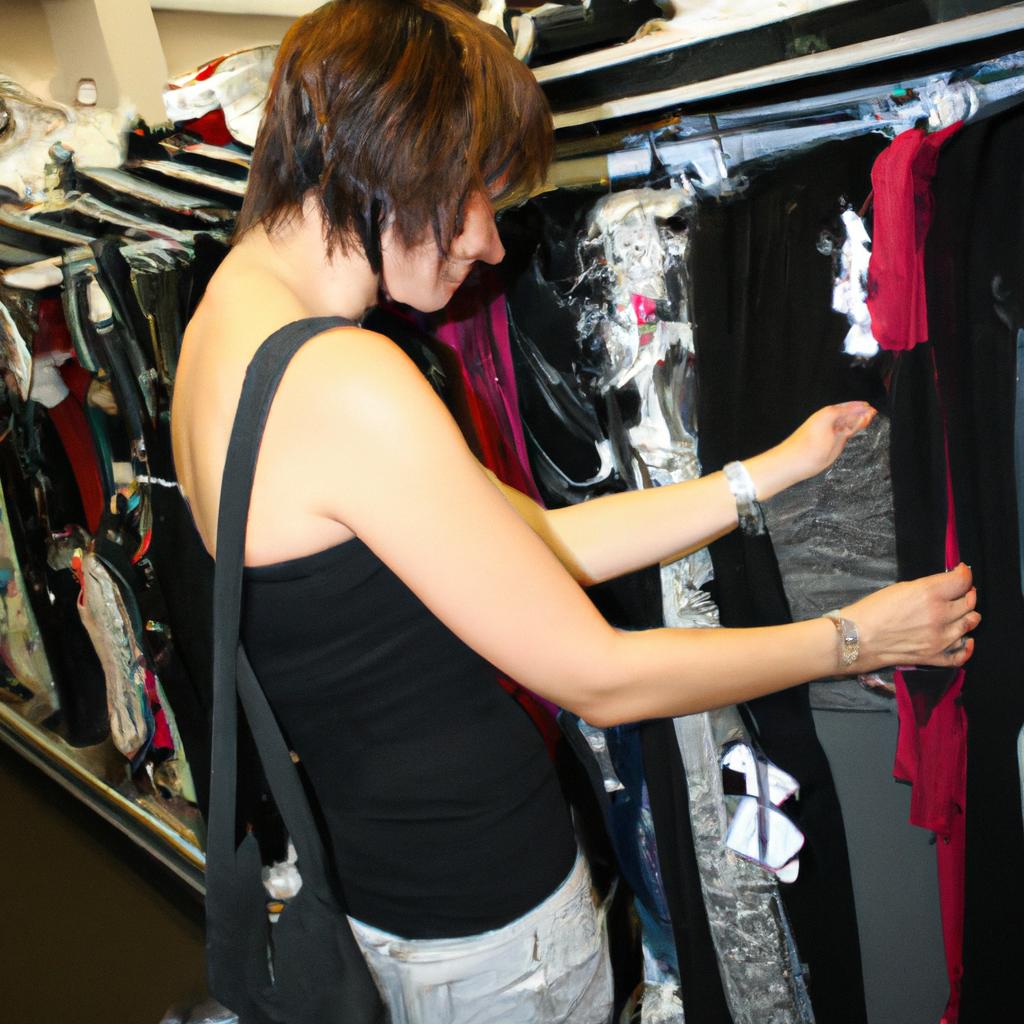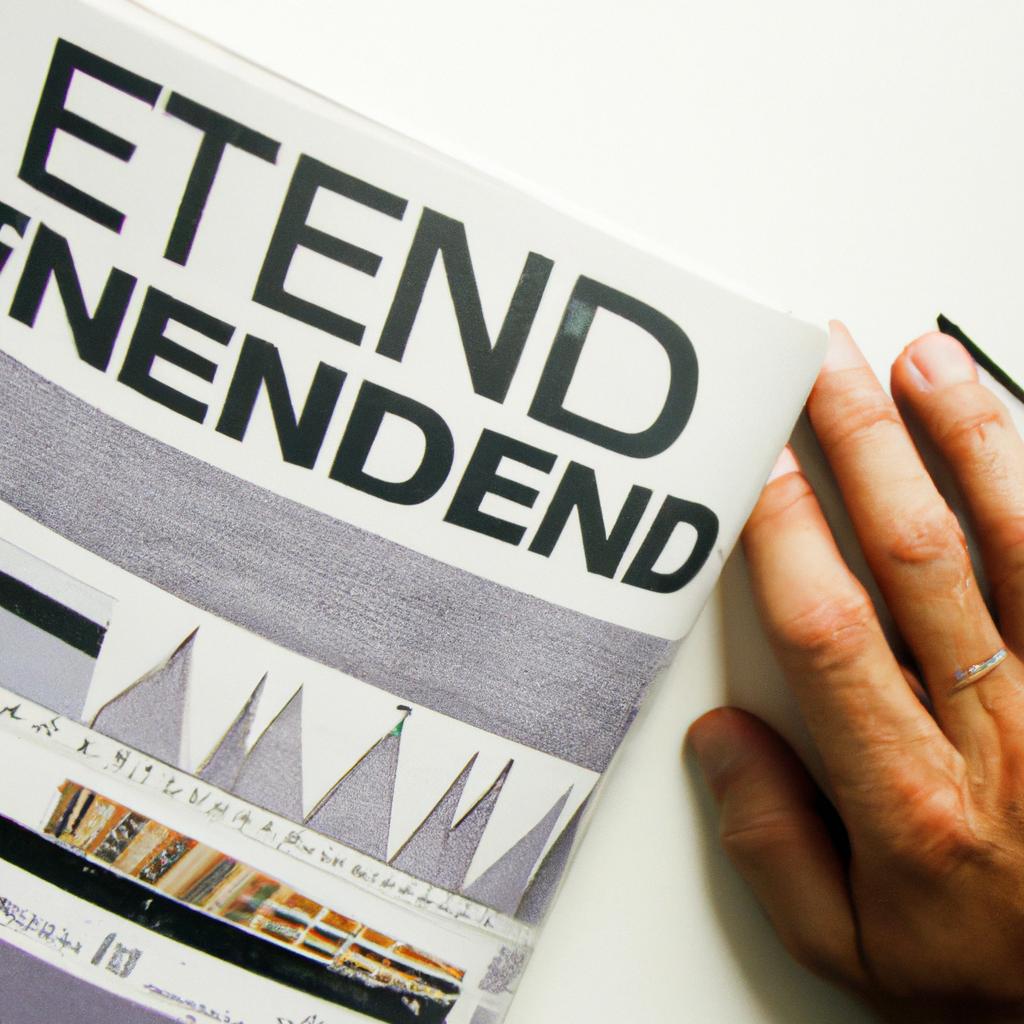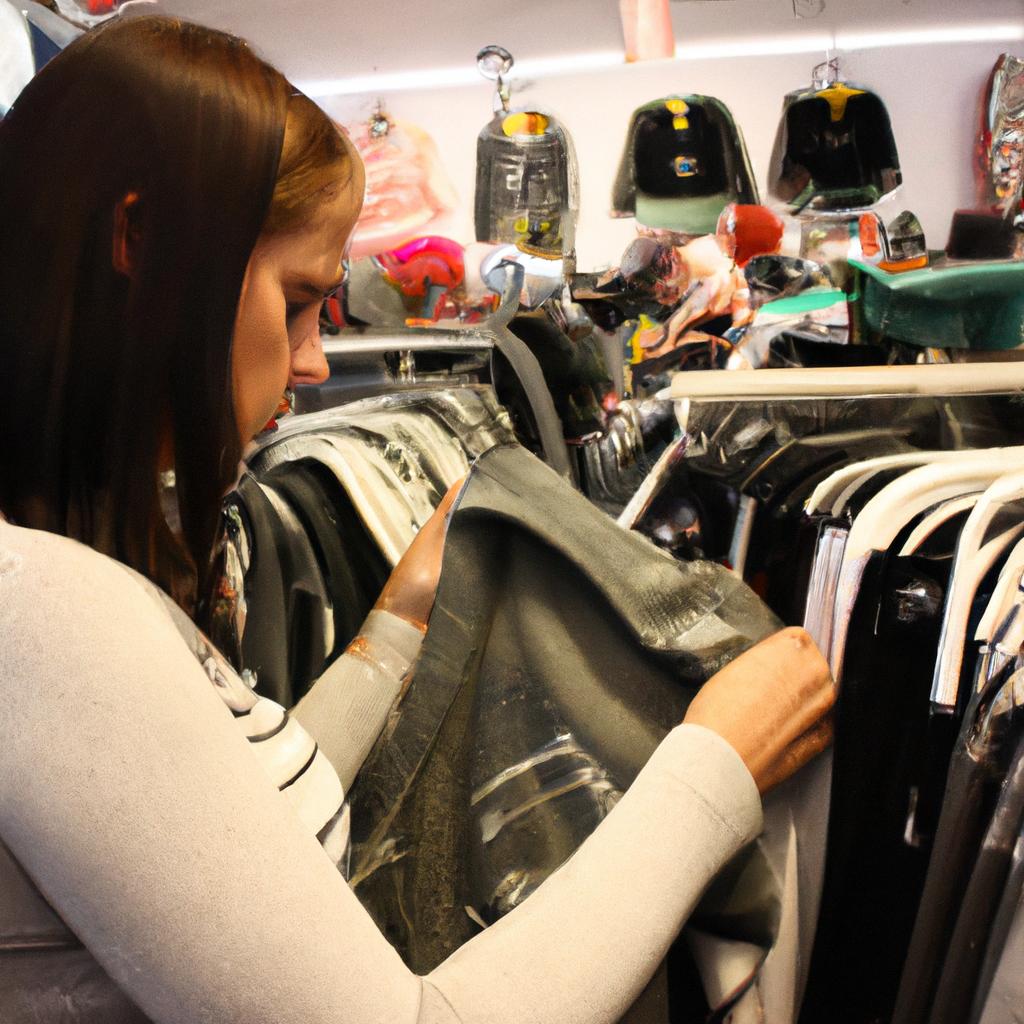Financial Planning for Fashionistas: Mastering Fashion Finance for Women’s Clothing

Fashion has always been a significant aspect of individuals’ lives, allowing them to express their unique style and personality. However, the pursuit of fashion can often come at a substantial financial cost, especially for female fashion enthusiasts who strive to stay up-to-date with the latest trends. For instance, consider Sarah, a young professional working in the fashion industry. Despite her love for clothing and accessories, she struggles to manage her finances effectively due to impulsive purchasing decisions and a lack of knowledge about personal finance. This article aims to address this issue by providing practical guidance on financial planning specifically tailored to women’s clothing expenses.
In today’s consumer-driven society, it is crucial for fashionistas to understand how their passion for fashion can impact their overall financial well-being. Financial planning plays an integral role in helping women maintain control over their spending habits while still indulging in their love for fashionable apparel. By adopting effective strategies such as budgeting, saving, and investing wisely, fashion-conscious individuals can strike a balance between satisfying their desire for trendy outfits and ensuring long-term financial stability. Moreover, gaining insight into various aspects of fashion finance – including understanding pricing structures, evaluating quality versus quantity trade-offs, and recognizing sustainable shopping practices – enables women to make informed choices that align with both their personal style and financial goals.
One essential aspect of financial planning for fashion enthusiasts is budgeting. Creating a realistic budget allows individuals to allocate a specific amount of money towards clothing and accessories while still covering other necessary expenses, such as rent, bills, and savings. By setting limits on fashion-related spending, women can avoid impulsive purchases and make more thoughtful buying decisions.
Another crucial aspect is saving. Setting aside a portion of income specifically for fashion-related expenses ensures that there are funds available when new trends or wardrobe updates arise. It is advisable to automate savings by setting up automatic transfers from the primary bank account to a separate savings account designated for fashion purchases.
Investing wisely in timeless and versatile pieces also plays a significant role in managing clothing expenses effectively. Prioritizing quality over quantity helps build a wardrobe with items that will last longer, reducing the need for frequent replacements. Investing in classic staples like well-fitted jeans, blazers, and neutral-colored tops provides a solid foundation upon which trendier pieces can be added without breaking the bank.
Understanding pricing structures within the fashion industry is another valuable skill. Being aware of seasonal sales, discount codes, and loyalty programs can help maximize savings without compromising style preferences. Additionally, exploring thrift stores, consignment shops, and online platforms for pre-loved items presents an opportunity to find unique pieces at lower prices.
Recognizing sustainable shopping practices not only benefits the environment but also aids in managing finances efficiently. Opting for ethically-made clothing from sustainable brands promotes conscious consumerism while minimizing the need for frequent replacements due to poor quality or fast-fashion trends that quickly go out of style.
In conclusion, financial planning tailored to women’s clothing expenses is vital for fashion enthusiasts looking to maintain control over their finances while still indulging in their passion for fashion. By implementing strategies such as budgeting, saving, investing wisely, understanding pricing structures, and adopting sustainable shopping practices, individuals can strike a balance between their love for fashion and long-term financial stability. So, embrace your personal style while keeping a watchful eye on your wallet!
Understanding Financial Goals
One example of the importance of understanding financial goals can be seen in the case of Sarah, a fashion enthusiast who dreams of starting her own women’s clothing boutique. Without a clear understanding of her financial goals, Sarah may find herself struggling to make informed decisions about her business finances and personal expenses.
To begin with, having clearly defined financial goals allows individuals like Sarah to establish a roadmap for their future endeavors. By setting specific objectives, such as saving a certain amount of money or achieving a target income level, they can work towards these goals more effectively. This sense of direction helps individuals prioritize their spending habits and allocate resources accordingly.
Moreover, understanding financial goals provides motivation and inspiration for individuals pursuing their passions. For fashionistas like Sarah, it means being able to afford high-quality materials and fabrics for their designs or attending prestigious industry events. These aspirations not only serve as rewards for hard work but also help fuel determination during challenging times.
In order to grasp the significance of financial goal-setting further, consider the following bullet points:
- Financial goals provide focus and clarity in managing funds.
- They enable individuals to track progress and celebrate achievements.
- Achieving financial goals boosts self-confidence and empowers decision-making.
- Setting realistic timelines ensures steady progress towards long-term objectives.
Additionally, visual aids such as tables can enhance the comprehension of key concepts related to financial goal-setting. The table below illustrates different types of financial goals that fashionistas might have:
| Financial Goal | Description | Example |
|---|---|---|
| Short-Term | Attainable within one year or less | Saving $1,000 by the end of the season |
| Medium-Term | Realistic targets achievable within two to five years | Paying off student loans within three years |
| Long-Term | Ambitious aims requiring more than five years | Buying a property within ten years |
| Lifestyle Goals | Financial objectives related to personal preferences | Traveling to fashion capitals twice a year |
In conclusion, understanding financial goals is crucial for individuals pursuing their dreams in the world of fashion. By setting clear objectives and utilizing visual aids like tables, fashionistas can navigate their finances more effectively.
Budgeting and Saving Strategies
To effectively plan for your financial future as a fashionista, it is crucial to have a clear understanding of your financial goals. Let’s take the example of Sarah, a passionate fashion enthusiast who dreams of starting her own women’s clothing line. Sarah has identified three key financial goals that will help guide her on her journey:
-
Launching her fashion brand: Sarah aims to save enough money to launch her own women’s clothing brand. This includes covering expenses such as designing and producing garments, marketing and advertising costs, and setting up an online store or physical boutique.
-
Expanding her customer base: Once Sarah establishes her brand, she wants to expand her customer base by reaching out to more potential clients through social media platforms, collaborations with influencers, and participating in fashion events. This goal requires allocating funds towards targeted marketing campaigns and establishing partnerships within the industry.
-
Achieving financial stability: In addition to pursuing her passion for fashion, Sarah understands the importance of achieving overall financial stability. She plans to create a safety net by building an emergency fund and saving for retirement alongside growing her business.
Now let’s explore some strategies that can help you align your finances with your fashion goals:
-
Prioritize spending: Take a critical look at your current spending habits and identify areas where you can cut back without compromising your personal style. Consider creating a monthly budget that allocates specific amounts for essentials like rent/mortgage payments, utilities, groceries, transportation, and savings.
-
Track your expenses: Keeping track of every single expense can provide valuable insights into how you’re managing your money. Utilize mobile apps or spreadsheets to record all expenditures so that you can easily monitor patterns over time and make necessary adjustments.
-
Set realistic targets: When setting financial goals related to fashion endeavors, it is essential to be both ambitious yet realistic. Break down larger objectives into smaller milestones that are achievable within specific time frames. This will help you stay motivated and focused on your progress.
-
Seek professional advice: Consider consulting with a financial advisor who specializes in fashion finance or small business management. They can provide valuable guidance tailored to your specific goals, helping you navigate potential challenges and make informed decisions.
By understanding your financial goals and implementing effective strategies, you can set yourself up for success as a fashionable entrepreneur.
Investing in Designer Pieces
Having established effective budgeting and saving strategies in the previous section, it is now essential to explore how investing in designer pieces can be a strategic move for fashionistas looking to enhance their financial portfolios. By making informed decisions about purchasing high-end clothing items, women can not only indulge in their love for fashion but also potentially increase their net worth over time.
To illustrate the potential benefits of investing in designer pieces, let’s consider the case of Sarah, a savvy fashion enthusiast who has been building her collection of luxury clothing and accessories over the years. Despite being initially hesitant due to higher price tags, Sarah decided to invest in a timeless designer handbag from a renowned brand. As she carefully maintained its condition and withstood short-term trends, that very same bag became highly sought-after among collectors, allowing Sarah to sell it at a significant profit several years later.
When considering whether or not to invest in designer pieces, there are various factors to take into account:
- Brand Reputation: Established brands with a strong reputation tend to hold their value better over time.
- Timelessness: Choosing classic styles that transcend seasonal trends increases the likelihood of long-lasting market demand.
- Limited Editions: Exclusive collaborations or limited edition releases often have increased resale value due to scarcity.
- Condition and Authentication: Maintaining impeccable condition while having proper documentation certifying authenticity contributes to maximizing resale potential.
Table – Factors Influencing Investment Potential
| Factor | Impact on Investment Potential |
|---|---|
| Brand Reputation | High |
| Timelessness | High |
| Limited Editions | Moderate |
| Condition | Moderate |
By strategically incorporating investments in designer pieces into one’s financial plan, individuals have the opportunity not only to enjoy exquisite fashion but also to build assets that appreciate over time. However, it is crucial always to conduct thorough research and consult experts when making such investment decisions.
As we have explored the potential benefits of investing in designer pieces, it is equally important to develop smart shopping habits that can further enhance our financial planning. Let’s delve into some practical tips for fashionistas to make informed purchasing choices and maximize their budgets.
Smart Shopping Tips
As we delve deeper into mastering fashion finance, let us now explore the art of investing in designer pieces. Investing in high-end fashion items can be a smart financial move for fashionistas who value both style and long-term returns on their investments. To illustrate this point, consider the case of Emily, a young professional with an eye for fashion and a knack for investment.
Case Study: Emily
Emily, a passionate fashion enthusiast, carefully curated her wardrobe over the years by investing in designer clothing and accessories. She saw it as not just a way to stay stylish but also as an opportunity to build wealth through strategic purchases. By focusing on timeless pieces that retained their value, she was able to create a collection that appreciated over time.
To make informed decisions when investing in designer pieces, here are some key considerations:
-
Brand Reputation:
- Choose established brands known for quality craftsmanship and enduring designs.
- Research the brand’s history, reputation among consumers, and industry accolades.
-
Timelessness:
- Look for classic styles that transcend trends.
- Opt for versatile pieces that can be styled differently for various occasions.
-
Limited Editions or Collaborations:
- Consider limited edition collections or collaborations between designers and brands.
- These unique items often have higher demand among collectors and enthusiasts.
-
Resale Value:
- Evaluate potential resale value based on historical data from reputable resellers.
- Take into account factors such as rarity, condition, and desirability when estimating future returns.
Table: High-End Fashion Investment Examples
| Item | Initial Cost (USD) | Estimated Future Value (USD) |
|---|---|---|
| Classic Chanel Bag | $5,000 | $7,500 |
| Hermès Silk Scarf | $400 | $600 |
| Rolex Datejust Watch | $8,000 | $12,000 |
| Christian Louboutin Pumps | $1,200 | $1,800 |
By carefully selecting designer pieces with long-term value potential and understanding the factors that influence their worth, fashionistas like Emily can make strategic investments in their wardrobe. Investing in high-end fashion items has proven to be an effective way for individuals to combine their passion for fashion with sound financial decisions.
Now let’s move on to smart shopping tips that will help you optimize your spending without compromising on style or quality. In the following section, we will explore ways to enhance your shopping experience while staying within budget and making informed choices. Managing Credit and Debt is an essential aspect of maintaining a healthy financial life as a fashion-forward individual.
Managing Credit and Debt
Transitioning from our previous discussion on smart shopping tips, it is essential for fashionistas to not only be savvy shoppers but also master the art of managing credit and debt. Let’s explore some key strategies that can help you maintain a healthy financial foundation while indulging in your love for fashion.
To illustrate this point, let’s consider the case of Sarah, a dedicated fashion enthusiast who often found herself overspending on her favorite clothing brands without considering the long-term impact on her finances. As a result, she accumulated significant credit card debt, making it challenging to pursue her style goals freely. Through careful management of credit and debt, Sarah was able to regain control over her finances and continue enjoying fashion responsibly.
Here are some practical steps you can take to manage credit and debt effectively:
-
Prioritize payment schedules:
- Timely payments: Ensure you pay your bills on time to avoid late fees or penalties.
- Payment plans: If you’re struggling with multiple debts, consider consolidating them into one manageable monthly payment plan.
-
Maintain low credit utilization:
- Keep balances low: Aim to use less than 30% of your available credit limit to demonstrate responsible borrowing behavior.
- Regular monitoring: Monitor your credit reports regularly to identify any errors or fraudulent activity promptly.
-
Use caution when applying for new lines of credit:
- Limited applications: Avoid excessive applications as they may negatively impact your credit score.
- Responsible borrowing: Only apply for additional credit when necessary and ensure you understand the terms before committing.
-
Seek professional advice if needed:
- Financial counseling services: Consider reaching out to professionals who can offer guidance tailored specifically to your situation.
| Key Strategies | Impact |
|---|---|
| Timely Payments | Avoids Late Fees |
| Payment Plans | Consolidate Debts |
| Maintaining Low Credit Utilization | Demonstrates Responsible Borrowing |
| Seek Professional Advice | Tailored Guidance |
By implementing these strategies, you can ensure that your love for fashion is not overshadowed by financial burdens. Managing credit and debt responsibly will empower you to make confident fashion choices without compromising your long-term financial goals.
Transitioning seamlessly from managing credit and debt, the next section focuses on planning for unexpected fashion emergencies. Stay prepared with our expert tips!
Planning for Fashion Emergencies
Having learned how to effectively manage credit and debt, let us now explore the importance of planning for fashion emergencies. By preparing ourselves financially, we can confidently handle unexpected fashion-related expenses without compromising our overall financial well-being.
Section H2: Planning for Fashion Emergencies
Imagine this scenario: you have a special event coming up, and your favorite little black dress has suddenly ripped beyond repair. In moments like these, having a plan in place can save you from unnecessary stress and financial strain. Planning for fashion emergencies involves anticipating unforeseen events that may require immediate attention or replacement of essential clothing items. Let us delve into some key strategies to ensure you are prepared when such situations arise.
Strategies for Planning Fashion Emergencies:
- Build an Emergency Fashion Fund:
- Establish a separate savings account specifically designated for unexpected fashion expenses.
- Contribute regularly to this fund, setting aside a small portion of your monthly budget towards it.
- Aim to accumulate at least three to six months’ worth of necessary expenditures.
- Prioritize Essential Wardrobe Items:
- Determine which clothing pieces are crucial to maintaining your personal style and professional image.
- Focus on investing in high-quality essentials rather than trendy or statement pieces that may quickly go out of style.
- Consider creating a capsule wardrobe with versatile staples that can be mixed and matched effortlessly.
- Research Repair Services:
- Explore local tailors or alteration shops known for their expertise in repairing various types of garments.
- Keep contact information handy so that you can promptly seek assistance if any item requires fixing.
- Remember that repairing damaged clothing is often more cost-effective than buying new replacements.
- Maintain an Inventory List:
Markdown Format Bullet Point List:
By following these practices, you will not only minimize the impact of fashion emergencies on your financial stability but also empower yourself to handle unexpected situations with confidence.
Table:
Markdown Format Table:
| Clothing Item | Purchase Date | Replacement Cost ($) |
|---|---|---|
| Black dress | Jan 2020 | $150 |
| Leather jacket | Oct 2019 | $250 |
| Designer bag | Mar 2021 | $500 |
| Work heels | July 2020 | $100 |
Planning for fashion emergencies is an essential aspect of mastering fashion finance. By building an emergency fund, prioritizing essential wardrobe items, researching repair services, and maintaining an inventory list, you can effectively navigate unforeseen circumstances without compromising your overall financial goals. Remember, being prepared not only ensures peace of mind but also allows you to continue expressing your unique style while staying within a sensible budget.






